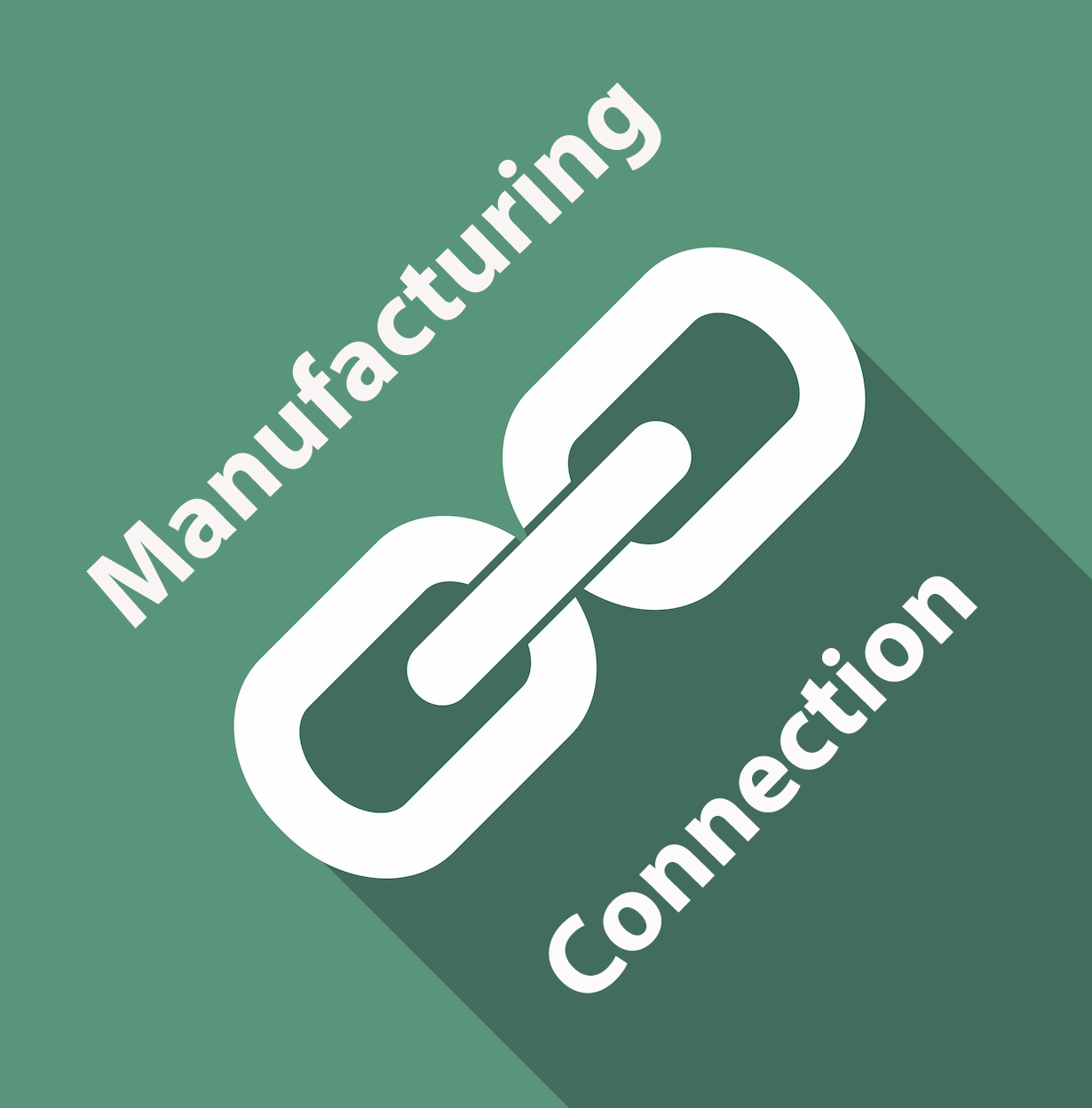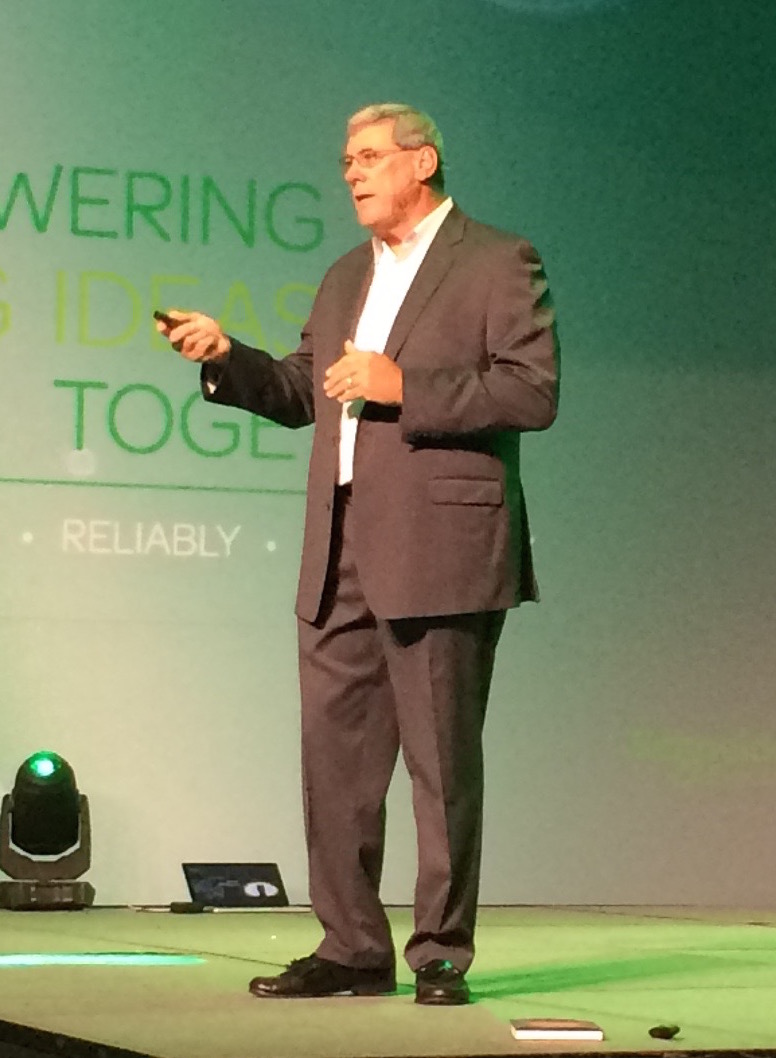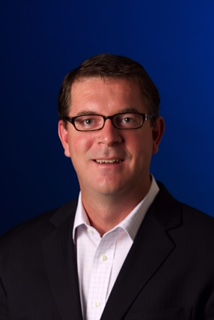
by Gary Mintchell | May 20, 2015 | Automation, Data Management, Internet of Things, Networking, News, Operations Management, Security, Technology
GE announced it is the first to implement and release a new Global Discovery Server based on the new Part 12 of the OPC UA standards. I’m taking its word for being first, although I cannot find anyone else promoting it. This is a useful standard that should further expand use of OPC in industrial networks.
The GE Proficy Global Discover Server (GDS) automatically discovers OPC UA devices on the network and connects to them with no configuration, saving time and reducing costs.
GE has standardized on OPC UA as an interoperability standard across several GE businesses.
The Global Discovery Server automates the previously manual and complex processes associated with connectivity and certificate management. The technology supports both the push and pull of certificates.
GE has also released a new version of the company’s CIMPLICITY HMI/SCADA product. CIMPLICITY is now an OPC UA Client and future releases will deliver more OPC UA client and server capability. As an OPC UA-enabled HMI/SCADA, CIMPLICITY can aggregate data from other OPC UA devices, add context to that data for analysis, and even provide that contextual data to other OPC UA servers at other system layers within an enterprise. Security is improved through the use of secure-by-design OPC UA. Reliability is higher, as OPC UA is designed to work on lower bandwidth connections and devices like radio modems.
OPC-UA provides a standard for GE devices and equipment, and the company now has multiple OPC-UA enabled devices: the PACSystems RX3i and RXi and MarkVIe are OPC UA-enabled controllers. Other GE products adopting the standard include: ADAPT3701, GE Oil & Gas’ System 1 condition monitoring software, 8 Series for primary or backup protection for underground and overhead medium voltage feeders, and 3 Series multifunctional feeder relays.
In addition to multiple OS platforms, companies have a multitude of legacy systems and equipment in place. GE’s OPC UA-enabled software can aggregate the data from these legacy systems and equipment and eliminate these islands of information. Even for devices that are unaware of OPC UA, the GE server can still manage certificates and trust lists for those devices, using Proficy Agent which acts on their behalf.

by Gary Mintchell | May 1, 2015 | Asset Performance Management, Automation, Data Management, Events, News, Operations Management, Process Control, Productivity, Technology, Workforce
 Day 2, or my first full day in Dallas at the 2015 Schneider Electric Global Automation conference, was packed with sessions, meetings, and dinner.
Day 2, or my first full day in Dallas at the 2015 Schneider Electric Global Automation conference, was packed with sessions, meetings, and dinner.
Keynotes at a user conference are always a mixed bag. Usually there is a well-known author or leader to give a motivational message. Usually the CEO gives a state-of-the-company address. And then there are product announcements.
Gary Freberger, who leads the automation business, gave just a short update mostly dwelling on the market size of the business that resulted from combining the Foxboro/Triconex process automation business with the Modicon business that already existed within Schneider. Schneider Electric now has far more market clout than before. My take is that this could have a subtle change in industry dynamics in the future.
Connection and Behavior Change
 Tom Koulopoulos, chairman and founder of Delphi Group, a Boston-based think tank, gave the “author/leader/motivational” keynote. He was also promoting his new book, The Gen Z Effect. Like many technologist speakers I’ve heard, he watches his kids and extrapolates to the entire generation.
Tom Koulopoulos, chairman and founder of Delphi Group, a Boston-based think tank, gave the “author/leader/motivational” keynote. He was also promoting his new book, The Gen Z Effect. Like many technologist speakers I’ve heard, he watches his kids and extrapolates to the entire generation.
However, he left us with two very important thoughts. First, it’s not about the technology. It’s about changing behaviors. And those of us who have implemented automation in our lives know that unless it changes the behaviors of the operators, it will not work.
The second thought is that beyond human behavior, it’s about connections. He posits that connections have brought us to this point over the last 300 years and connections will take us forward.
Then he left us with a little flow chart of what is happening:
Real-time analytics–>Predictive analytics–>Business Intelligence
This really does reflect where we are moving with Industrial Internet of Things and contemporary manufacturing strategy.
Solve World Hunger
 Peter Martin, Schneider vice president (and one of several visionaries), always presents well. This year his presentation was better than usual. There were essentially two main points—let’s go back to our roots as control engineers while expanding the scope of what we’re controlling, and let’s recognize the value of control engineers and be aware of what we can contribute to the world.
Peter Martin, Schneider vice president (and one of several visionaries), always presents well. This year his presentation was better than usual. There were essentially two main points—let’s go back to our roots as control engineers while expanding the scope of what we’re controlling, and let’s recognize the value of control engineers and be aware of what we can contribute to the world.
He began by discussing an early science project which had way too large of a scope. The teach kept saying, “Peter, don’t try to solve world hunger.”
Well…fast forward to today. Martin also left us with a little flow chart of sorts:
Use our control expertise to solve problems of energy generation and transmission –>
Half-a-million children die each year due to tainted water; desalination is an energy problem; solve energy problem leads to solving water problem –>
If we can build a PGA golf course in Dubai through solving the water problem, we can build gardens in Africa. So we could solve world hunger –>
We can also solve environment by solving energy. In India, a petrochemical plant grew a mango forest to absorb carbons –>
Solve environment problem leads to solving world health.
I have known Peter for more than 10 years. One of his consistent themes is that engineers are undervalued—and they often under value themselves.
By golly, we could solve world hunger. We could miss the opportunity of a lifetime by thinking too narrowly.
Our day jobs
Automation is the platform upon which we build control. We need to do a few things.
Plants organize with an asset topology. Automation uses a technological topology. We need to reduce the complexity of the automation topology and make it align better with the plant topology. But the installed base is an anchor holding us back. “So, migration becomes really exciting.”
By enabling personalized automation, we no longer eliminate people. We begin to use people to their fullest extent. Forget the lights-out industry talk.
“Have we pushed the limits of control to the furthest extent? We have a long way to go. Discipline of control engineering is just beginning. We must improve efficiency in a safe manner. Business has shifted from highly transactional to real-time. And historically we have separated plant floor from business. Business results get to operations too late to react. We have moved to a real-time control problem because the time constraints of business have shrunk. We need real-time business control as well as real-time process control.”
“I’ve been told that the age of the control engineer is over; No, the age of the control engineer is just beginning. We’ve just changed what we’re controlling. Look at maintenance, asset performance, reliability, it’s all changing in real-time. If we measure in real time and apply real-time control, then we can manage it. Efficiency, reliability, profitability, security, safety, environment. And forget calling people ‘labor,’ but instead call them ‘production managers’ for that is what they really are. Let’s just enable them.”
Martin concluded, “Challenge us to create value-driven innovation across all domains. Keep our eye on our value.”

by Gary Mintchell | Apr 28, 2015 | Automation, News, Process Control
First afternoon and evening done at the Schneider Electric Global Automation Conference.
When the Schneider Electric acquisition of Invensys was announce about 18 months ago, I predicted that the companies of Invensys would thrive under stable organization and financing—something that Invensys never had.
Well, it was either that, or Schneider would tear things apart and sell off pieces. And there havebeen rumors of just that scenario. The result seems to be the former. I’m sure the planning analysts that Schneider surely has looked at all the scenarios. But everything seems intact.
Schneider has actually bumped Foxboro/Triconex research and development spending by 25% over an already increased amount under the last gasp of Invensys.
And here is one result. The first announcement of the conference. A thoroughly updated Tricon safety system. Of note is the item that this is the first TUV certified safety and security system.
Updated Compact Industrial Safety System
 Tricon CX, released today, is a compact system for safety and critical control applications in the oil and gas, power, refining, chemicals, pharmaceutical and biotech industries, where safe operations are critical and reliable operation is paramount. A certified ISA Secure system, the high-integrity and highly available Tricon CX ensures operational integrity, protecting against inherent risk and hazards, as well as external threats such as cyber-attack.
Tricon CX, released today, is a compact system for safety and critical control applications in the oil and gas, power, refining, chemicals, pharmaceutical and biotech industries, where safe operations are critical and reliable operation is paramount. A certified ISA Secure system, the high-integrity and highly available Tricon CX ensures operational integrity, protecting against inherent risk and hazards, as well as external threats such as cyber-attack.
 “Safety and security have always been a top concern for our industrial clients, but now new threats, such as cyber-attack, have challenged the traditional approaches they have taken to protect and secure their people, property, communities and the environment,” said Mike Chmilewski, vice president, process systems offer management, Schneider Electric process automation business.
“Safety and security have always been a top concern for our industrial clients, but now new threats, such as cyber-attack, have challenged the traditional approaches they have taken to protect and secure their people, property, communities and the environment,” said Mike Chmilewski, vice president, process systems offer management, Schneider Electric process automation business.
“Therefore, our clients demand the highest levels of safety and security to keep them safe and ensure the systems they rely on are immune to external threats. Our high-performance, future-proof Tricon CX safety system does just that. With more performance and capability, it can help clients maximize productivity, reliability and security while minimizing risks and the likelihood of business interruption. It’s another example of why Schneider Electric is uniquely positioned to power the big ideas our clients need to solve their most critical issues.”
The latest addition to Schneider Electric’s Triconex line of safety-instrumented systems, the Tricon CX is smaller, faster, lighter and more powerful than previous safety solutions. Its advanced functionality enables online upgrades without operational interruption. Additionally, the compact design allows for a number of new features including:
• Reduced form factor by 50 percent
• 67 percent reduction in weight
• Lower power consumption
• Advanced monitoring and control capabilities, including:
• Supervised DI/DO with advanced line-performance diagnostics
• Fast analogue inputs with integrated HART
• 1ms SOE digital input
• Choice of direct termination or external termination panel
• 300 percent increase in controller tag capacity
• 5 times increase in peer-to-peer performance
• ISA Secure EDSA level 1
• New automated test and verification of safety logic
“The Tricon CX safety system will enhance Schneider Electric’s current safety portfolio, and ARC believes its increased capabilities will enable new and existing customers to expand existing systems, replace obsolete systems or implement new systems,” said Larry O’Brien, vice president, process automation, ARC Advisory Group. “Its ability to handle upgrades without interrupting the operation should give users confidence in their ability to continue to draw additional value from their investments down the road.”
In addition to leading technology and solution sets, Schneider Electric’s process safety offer includes more than 650 safety engineers who provide a suite of services that help clients better manage their operations. These services include:
• Safety Instrumented Functions Management services
• Process safety consulting services
• Functional safety learning services
Process safety consultants also provide technology paths to help future-proof Triconex technology investments and ensure systems adhere to the latest safety standards.

by Gary Mintchell | Apr 21, 2015 | Automation, Data Management, News, Operations Management, Security, Technology
 [ Updated] Wherever I go and with whomever I speak, file security in this age of Internet of Things, connected devices, collaboration, and open access is top priority. I just heard about this new company and technology who promises a higher level of file security.
[ Updated] Wherever I go and with whomever I speak, file security in this age of Internet of Things, connected devices, collaboration, and open access is top priority. I just heard about this new company and technology who promises a higher level of file security.
FinalCode Inc., enterprise file security for a connected world, announced global availability of its enterprise-grade file security. By combining a patented approach to make file security processes seamless with the ability to remotely delete files on popular devices, FinalCode allows organizations to gain strong file protection to ensure sensitive information remains protected on devices, content management systems, cloud storage and collaboration channels.
According to Privacy Rights Clearinghouse, nearly 305 million records have been leaked in the U.S. for the past five years due to unintended disclosure, hacking or malware, insiders, and lost or discarded mobile and stationary computing devices. In a connected world of personal and mobile computing, cloud applications, dynamic collaboration and cyberattacks, organizations have limited means available to protect sensitive shared files inside or outside a corporate network, which presents tremendous exposure to data leakage, compliance, reputation and liability risks. One significant challenge is applying strong file security, as sensitive and regulated files are sent, shared and forwarded to unintended or unauthorized users outside trusted computing and content sharing environments. Worse are confidential files inconspicuously exfiltrated by hackers and insiders. Another challenge is how to apply file protection and usage restrictions in a persistent yet easy, seamless and scalable manner that does not impact user experience or impede workflows and collaboration.
“We used to think that even if employees handled files with care, it was impossible to keep them 100 percent safe due to threats of hackers and malware as well as unintentional mishandling – but then we found FinalCode,” said Hiroshi Wada, IT manager of Corporate Planning at Pioneer Service Network Corp. “This software solves all the issues because not only can we encrypt files, but we can easily specify permissions as to who can access the file and what they can do with the file. We also have full audit capability. Furthermore, with FinalCode, we can remotely delete distributed files whenever we want. It was exactly ‘the final’ choice for file security.”
FinalCode addresses data leakage risks by providing the first and last line of sensitive file defense. The solution allows any organization to gain comprehensive protection and granular control over what can be done with files and by whom, inside or outside the firewall perimeter. It delivers strong file security with the flexibility of being application-, device-, storage-, cloud-, content management- and collaboration-agnostic.
Users may simply define file security settings and respective recipients, or have such controls applied automatically through corporate policy. The FinalCode client encrypts the file and the FinalCode server manages keys and permissions. File recipients download a small FinalCode client after secure registration with the FinalCode server in order to have access to and use of the file according to policy.
As FinalCode-protected files are stored, shared and used within and outside collaboration platforms, protection persists with the ability to remotely delete files. In addition, the company’s patented CryptoEase technology streamlines file security and encryption processes without requiring the user to remember passwords, and by dramatically reducing key management overhead, makes FinalCode implementation rapid and scalable.
FinalCode functionality includes:
- Security – AES-256 encryption, standards-based key management, secure key server and global user access management system and persistent protection with application whitelisting and remote file deletion
- Flexibility – readily works with any application, popular devices, file storage, and enterprise and cloud-based content management systems, and across all communication channels: trusted, untrusted, private or public
- Full control – granular file permission and protection settings by owner or through enterprise policy templates: authorized users, duration, open, copy, paste, edit, save, share, print, screen capture, revoke and delete
- Intelligence – comprehensive auditing, pattern tracking, notification and governance across the file usage lifecycle with the means to modify policy settings on-demand or via recipient request
- Rapid deployment – lightweight and efficient agent, extensive directory and infrastructure interoperability, and scalable cloud or on-premise virtual appliance
“While many of the world’s most publicized data leakages are due to access to unprotected files stolen by hackers and insiders, those are only the tip of the iceberg. Millions of business-sensitive files have been exposed by inadvertent emails, lost portable and storage devices, and undocumented transfers of files,” said Gord Boyce, CEO of FinalCode. “Given the dynamics of file sharing and cloud-based collaboration, the risk to sensitive data and intellectual property – such as corporate financials, board materials, customer lists, personally identifiable information (PII), healthcare records, designs and trade secrets – is a substantial exposure. The potential for FinalCode to help organizations extend control of their file security in today’s mobile and cloud connected world is enormous.”
FinalCode is the name for both the file security platform and the newly formed company based in the U.S. that is bringing the solution to the global market. The solution can be implemented as a SaaS, virtual appliance or hybrid, with packages designed to accommodate small-to-medium businesses, government agencies and large global enterprises. The FinalCode platform is generally available with annual subscription pricing starting at $27,000 $25,000, and the FinalCode client, used by file recipients, is available at no charge. Prospective customers and channel partners are invited to take FinalCode for a test drive by registering.

by Gary Mintchell | Feb 23, 2015 | Automation, Internet of Things, News, Operations Management, Technology
The big talk now in the Industrial Internet of Things centers on how to get all the devices to talk the same language.
There is much work going on in the area of interoperability–using a set of a few standards to allow disparate devices and applications to talk.
Here is a company announcing this week at the Embedded Systems Conference in Germany a caveat–since there is no standard, just use our proprietary system.
It “has all the building blocks” to construct a system. Note that this company is not expressly industrial manufacturing. We do have some interoperability standards now, but it is true that getting information from sensor to application can be trying.
At any rate, check out the Connect One system.
Connect One has introduced iChipNet, an Internet of Things (IoT) end-to-end platform that helps customers get their IoT products to market faster.
Connect One’s iChipNet includes all the building blocks – hardware, software, and connectivity – required for IoT product design. Since industry IoT standards are not yet in place, end-to-end solutions from a single vendor can ensure interoperability among IoT functions so that components seamlessly “talk” to each other. Such interoperability enables reliability and maintainability of products once they’re being used in consumers’ homes, building control, or medical devices, and beyond.
Connect One’s iChipNet platform incorporates the following building blocks:
- Embedded technology—Internet Controller chips, Ethernet modules, Wi-Fi modules for embedding inside IoT products
- Gateway/Hub—an optional gateway or hub to connect IoT products to the local network and to the Internet with a zero-configuration feature
- Cloud solution—Server software or service to manage deployed IoT products
- Smartphone app—An app library and example that make it easy for customers to provide a smartphone app with their IoT product
It’s All About Interoperability
The IoT comprises smart devices connected to the network and services that, for example, manage energy usage, provide doctors with real-time medical information, or monitor a baby or child remotely. Such services require a complete IoT platform that can efficiently manage data and ensure fast and reliable delivery to the consumer.
When developing such solutions, customers need an IoT technology vendor that can provide all the building blocks, and confidence that these building blocks work seamlessly together. Over time, by using a single vendor, customers protect themselves from software updates or upgrades that apply to a single part, rather than the whole system, and cause unnecessary system failures.
“In the absence of IoT standards, Connect One is making it easy for anyone to design an IoT device and service and get them to market quickly,” noted Erez Lev, General Manager for Connect One. “By providing all the building blocks needed, we assure customers of ongoing interoperability of our technology as their product evolves in the market. We believe IoT products should be simple and we have designed our technology to provide this.”
Connect One’s IoT Platform: Already Proven in Other Markets
Connect One has provided IoT chips and modules to market segments like home automation, medical, security, point-of-sale, asset management, smart energy, and more since long before the market was called IoT. Building on its M2M expertise, Connect One is tailoring these market-proven chips and modules for the IoT era and consumer space.
Connect One’s new IoT building blocks include everything product designers need to develop, deploy, and manage their IoT products securely and reliably. iChipNet embedded technology, available in many form factors and configurations, recognize the gateway/hub and seamlessly connect to it without end-user intervention.
The cloud solution keeps in touch with the iChipNet-based products, enabling a simple and robust management solution for products in the field. The IoT module connects to the iChipNet cloud solution automatically and its I/O ports can be controlled and managed via the cloud interface. The module has an embedded web server that enables the developer to configure and name the I/O ports according to function in a simple and intuitive manner. Finally, the smartphone app libraries and examples make it easy to build and promote a smartphone app as part of the solution or service provided by the customer.














